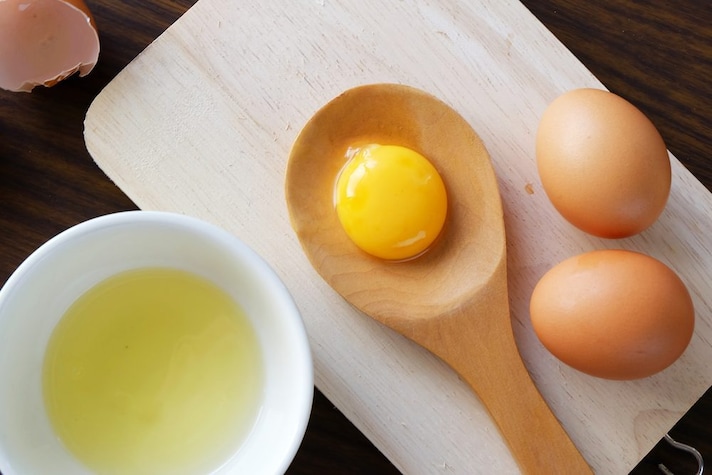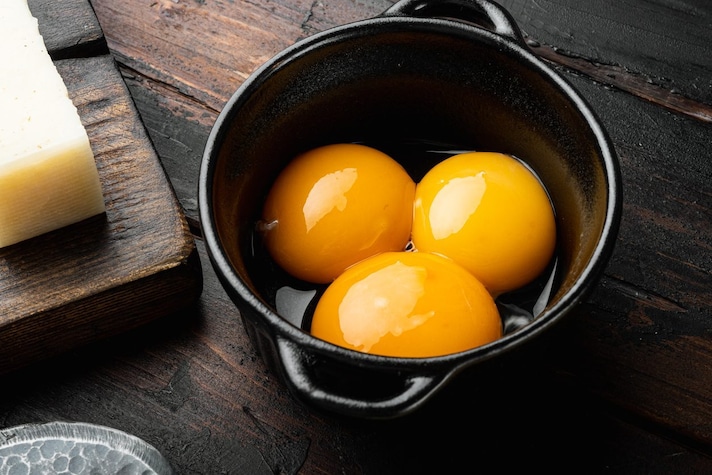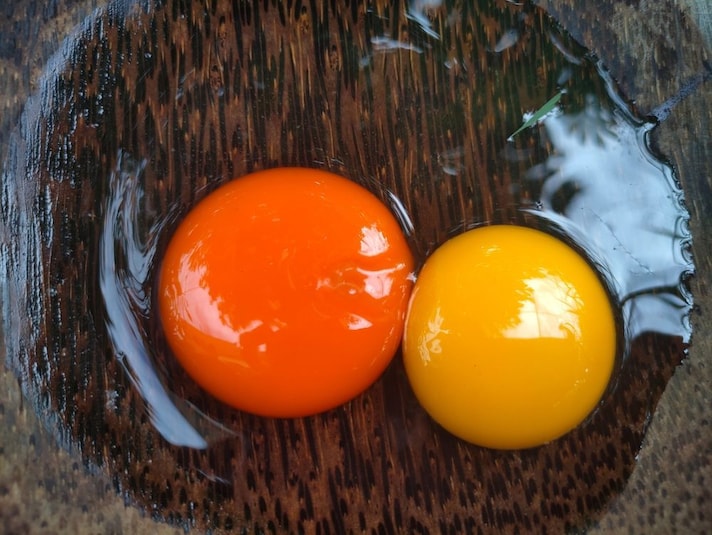
It's very common to open eggs, sometimes even from the same package, and discover that the yolks are very different shades: some are a very light yellow, others are a brighter yellow tending towards orange, still others are a deep, vibrant orange. What causes this variety of colors, and does it make any difference?
The answer is actually very simple. The variety of egg yolk colors depends simply on the hen's diet, but has no impact on the flavor or nutritional value of the product. It's a bit like colored eggs, which, even if they're blue, brown, or green on the outside, are the same as any other egg inside: the color of the shell depends solely on a genetic factor related to the hen's breed.
There's something related to the color of the yolk that varies depending on its intensity, and that's the quality of the egg. It's no coincidence that in the past, color was used to determine the health of the animal that produced the food. Here's everything you need to know about egg yolk color.
What Changes From a Yellow Yolk to an Orange Yolk?
Tradition holds that a more intensely orange yolk is synonymous with a healthier and more nutritious egg, but is this really the case? Yes and no. While from a purely nutritional standpoint, eggs are more or less the same regardless of their internal color, from a quality standpoint, eggs with an intensely orange yolk are considered healthier.
This is because, as explained, the color of the yolk depends on the hen's diet, and orange yolks usually indicate a bird with a healthier, more natural diet, rich in carotenoid-containing foods, typically found in organic farms. Of course, this doesn't mean the rest of the eggs are bad or should be discarded: there are also free-range farms that feed their birds a different diet, but they're still not intensive and produce perfectly healthy eggs.
It's important to consider the overall conditions under which the hens are raised and choose based primarily on this factor, regardless of the internal color of the egg, which, in the case of products derived from healthy animals, remains primarily an aesthetic choice. For example, in the case of egg pasta, to make the final result more appetizing, bright orange yolks are chosen. Having clarified this aspect, here are the yolk shades you might encounter.
1. Light Yellow Yolk

The very light yellow color of the yolk indicates that the birds have a diet very low in xanthophyll, the carotenoid-containing substance responsible for the orange pigment. Hens that produce this type of egg tend to have a fairly unvaried diet, primarily based on feed made from wheat, barley, or white cornmeal, which are responsible for the less intensely colored yolks.
2. Yellow to Orange Yolk

If the yolk has a brighter color, which can be dark yellow or a light but vivid orange, it means that the hens have a mixed diet that is not only based on feed but which includes a mix of green plants, corn flour (not white, the traditional yellow one), alfalfa and in general vegetables rich in xanthophyll, resulting in the yellow-orange hue that we commonly find in the yolk.
3. Deep Orange Yolk

The eggs with their intense, vibrant orange yolks come from free-range hens, free to roam outdoors and feed on whatever they can find, especially natural crops and insects that contribute to this shade. As we've explained, this is the option we recommend, not only for aesthetics or flavor nuances, but also and above all for the sustainability of the farms, which, in this case, are definitely organic and do not exploit animals.
;Resize,width=767;)
